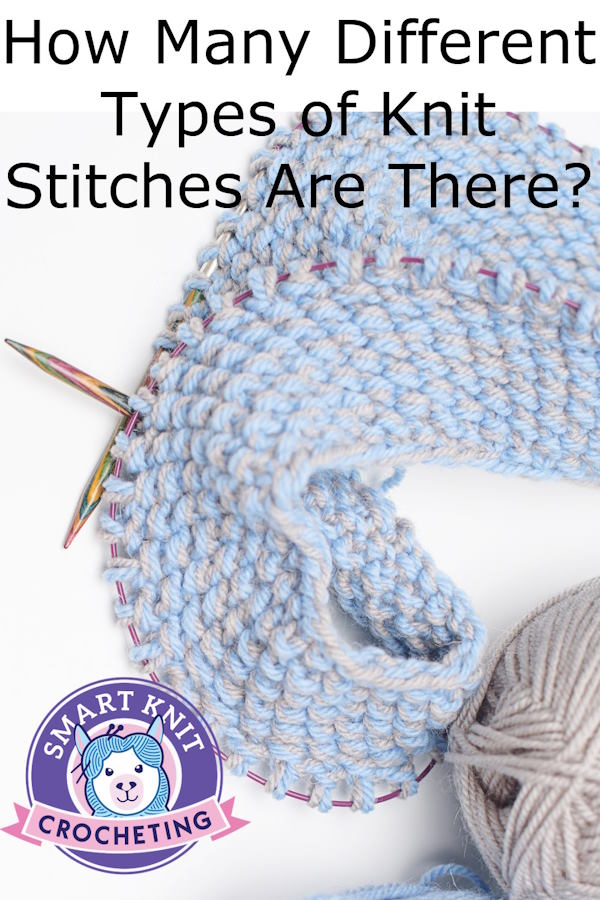How Many Different Types of Knit Stitches Are There?
Types of Knit Stitches by Janice Jones
Have you ever wondered how many types of knit stitches you must master to consider yourself an experienced knitter? When I first learned to knit, I was quite happy to master the garter and stockinette pattern and didn’t think about everything I didn’t know. That was when I was a child and didn’t know better.
Browse by Types of Knit Stitches
Table of Contents
How are Knit Stitches Classified?
- Basic Knit Stitches for Beginners
- Just Knit and Purl Stitches
- Rib Stitches (Ribbing)
- Reversible Stitches
- Eyelet and Lace Knit Stitches
- Cables
- Slip Stitches (One colored textures and multicolored stitches)
- Mosaic Knitting
- Intarsia
- Stranding Knitting (Fair Isle, Scandinavian)
- Twisted Knit Stitches
- Double Knitting
- Textured Types of Knit Stitches
- Entrelac
The truth is, there are only two types of knit stitches: The Knit and Purl Stitches. Once you master these two stitches, you can make anything. Well, maybe not at once, but just about every type of stitch pattern or technique incorporates these two stitches and there are many of them.
The Knit Stitch (Garter Pattern)
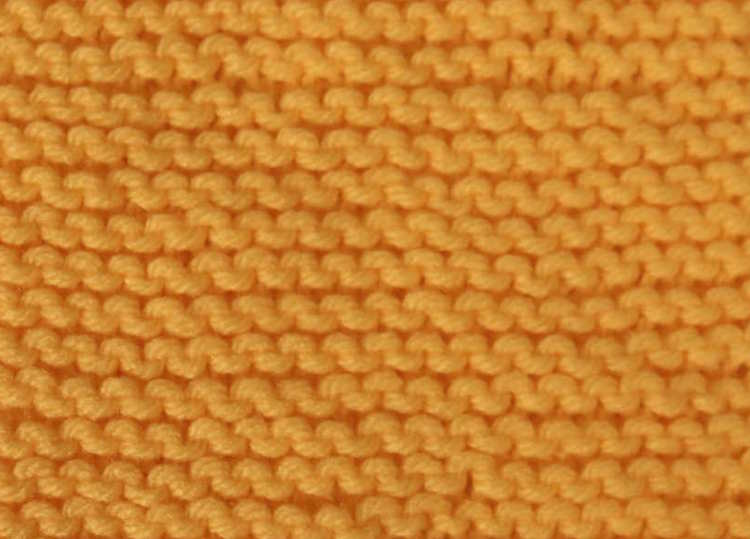 The knit stitch
The knit stitchLearn How to make the Knit Stitch
The Purl Stitch (Reverse Stockinette)
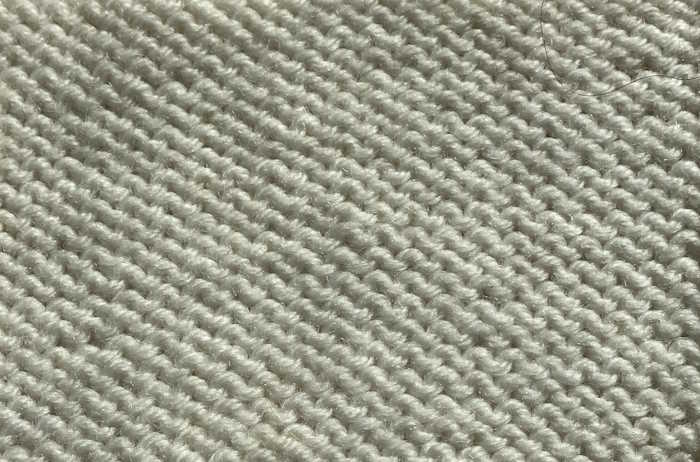 The Purl Stitch (Reverse Stockinette)
The Purl Stitch (Reverse Stockinette)Learn How to make the Purl Stitch
How are Knitting Stitches Classified?
We can classify different knit patterns in various ways. You will see stitches grouped by the number of stitches or row repeats, how the stitches look, or the knitting tradition where the stitches originated (Fair Isle, in Scotland).
On this website, I am categorizing these different techniques based on difficulty, appearance, and traditions.
Here are the categories:
Types of Knit Stitches
If you are just getting started, I would recommend that you start here by learning some basic knit stitch patterns. These are normally those that you can make by combining knits and purls. There are tons of tutorials to help you get started.
Knitting Stitches for Beginners
Knits and Purl Stitches
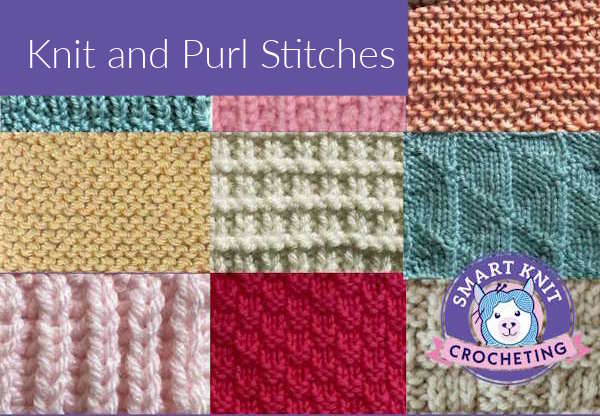
All the stitches in this group are made with just knits and purls, so the beginner should be able to master these stitches without the need to learn other techniques. These are the easiest of all stitches, but just because they are easy does not detract from the lovely textures they can create.
Go to My Knit and Purl Stitches Glossary
Rib Stitches
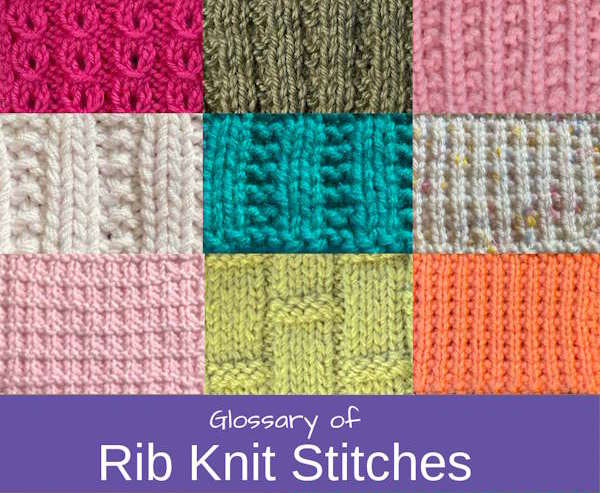
The rib stitch is a stretchy, textured knit pattern created by alternating knit and purl stitches within the same row. Due to its elastic properties, it is commonly used for cuffs and necklines.
The most basic ribbing patterns include 1x1 rib stitch and 2x2 rib stitch, which refer to the number of knit stitches versus the number of purl stitches. There are many different rib stitches and most are easy for beginning knitters.
Visit my Rib Stitches Page
Reversible Stitches

This category helps beginning knitters who want to make something that will show on the front and back such as a blanket or scarf.
These stitches can be knits and purls, rib stitches, textured, or lace, and still be reversible. The only thing that stands out for reversible stitches is that they look great on both sides.
Check out my Directory of Reversible Stitches
Eyelet and Lace Stitches
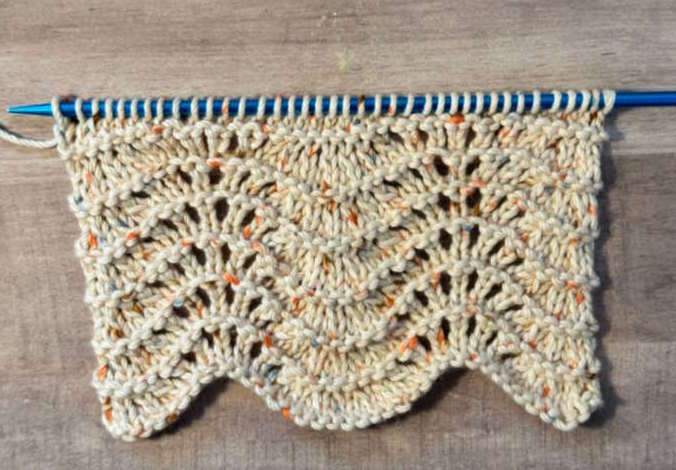
Lace knitting involves creating patterns with open, decorative holes by pairing yarn overs (increases) with decreases. This method allows for the creation of complex, delicate patterns often reminiscent of lace fabric.
Due to its intricate nature, lace knitting is more suited to advanced knitters, but there are plenty of easy lace or eyelet patterns that beginners can tackle. Lace patterns can be used in shawls, tops, or as decorative edges on various projects.
Reference: Lace and Eyelet Stitches
Learn more about Lace and Eyelets
Cable Stitches
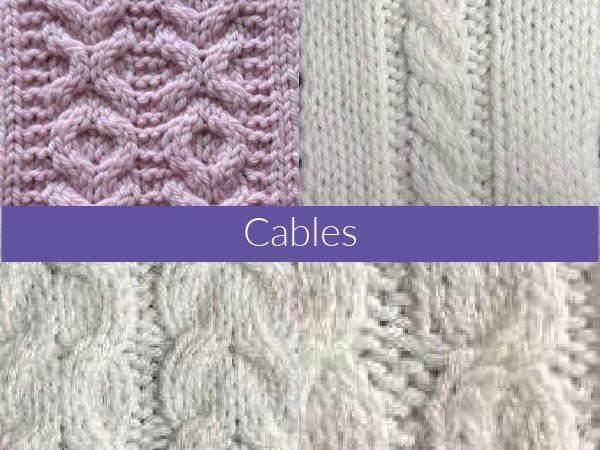
Cable stitches are a technique used to create twisting or braiding patterns within the knit fabric. This is done by placing a few stitches on a cable needle to hold them at the front or back of the work, while other stitches are knitted.
The reserved stitches are then knitted, creating a twist or braid. Cables can vary in complexity from simple twists to intricate designs involving multiple stitches. They are a popular choice for sweaters and cardigans, offering a classic, textured look. Most cable stitches are complex but a few are easy for beginners to tackle.
Reference: Cables & Arans: 250 Stitches to Knit
Slip Stitches
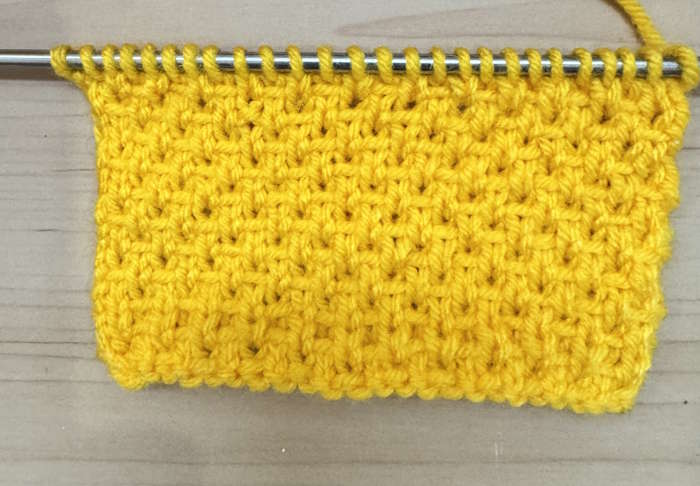
The slipstitch knitting technique involves slipping a stitch from the left needle to the right needle without knitting it. This can be used for colorwork or to create extra texture in the fabric.
Slip stitches can be combined with knit and purl stitches to form interesting patterns and textures. This type of stitch is often used in multi-color knitting projects like scarves and blankets, where simple color changes can have a dramatic effect.
Visit my page all about Slip Stitches
Colorwork Knitting
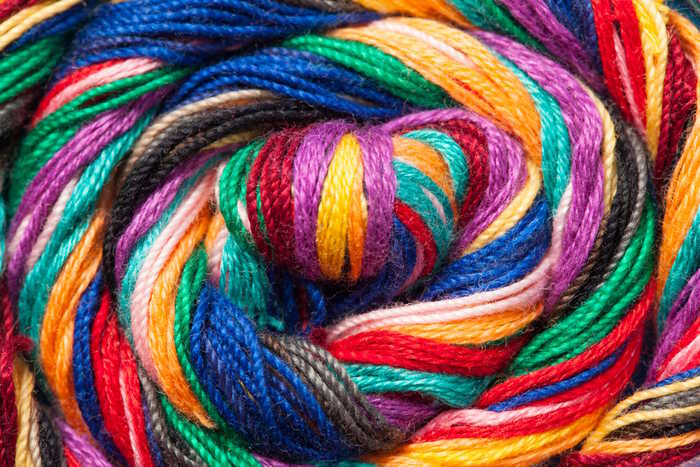
Colorwork knitting is a broad term that describes many different techniques that use color to create a design. Wait, you might be thinking, isn't all knitting colorful? Yes.
Colorwork is normally used to include designs that include two or more colors in the same row, or colors that are added to a fabric after knitting. These designs can range from simple stripes to more complex motifs and geometric patterns to actual images.
Some of the many types of colorwork include stranded knitting, intarsia, mosaic, shadow and more.
Here is an overview of the many types of colorwork with links to individual tutorial pages. Jump to Colorwork Knitting.
Twisted Stitches
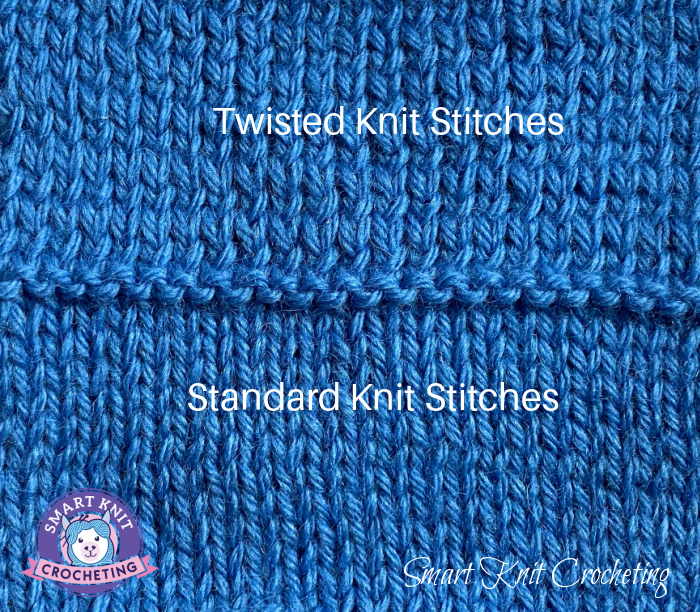
The twisted knit stitch is a variation of the basic knit stitch that produces a textured, elongated stitch with a crisp, defined appearance. This effect is achieved by knitting through the back loop of the stitch instead of the front loop.
When you knit through the back loop, the stitch twists on itself, creating a tighter and more prominent stitch than the standard knit stitch. Though normally considered a mistake, the twisted knit stitch is excellent for adding visual interest and texture to a fabric. It's often used in ribbing for cuffs and necklines, where its elastic and firm texture helps keep shape and snugness.
Additionally, it can be incorporated into various knitting patterns to highlight certain areas or details, such as in cables or in the borders of knitted items like scarves and hats.
Textured
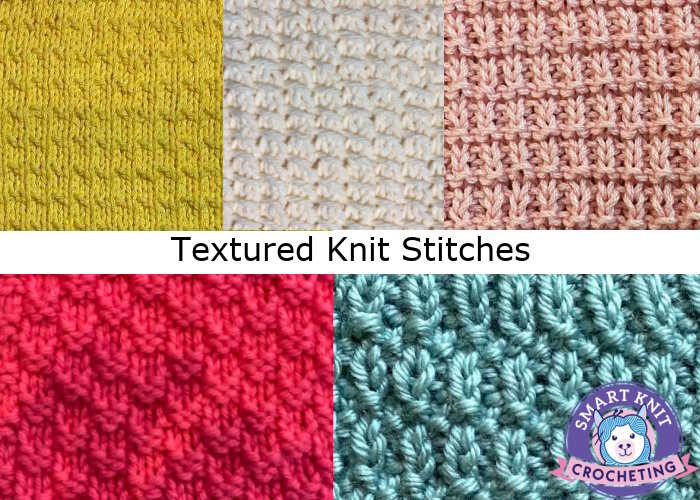
Textured knitting stitches add depth and interest to knitted fabrics by creating raised patterns or designs that stand out from the background. Common textured stitches include the bobble stitch, which produces small, round protrusions, or the popcorn stitch, which results in larger, textured puffs.
Techniques such as cabling, twist stitches, or slip stitch patterns can also be used to add texture by manipulating how stitches are knit in relation to each other.
Textured stitches are particularly admired in items where tactile appeal is important, such as cozy blankets, thick winter scarves, or plush sweaters, providing both visual embellishment and a unique touch sensation.
These kinds of stitches can transform a simple knitting project into something spectacular and sophisticated, showcasing the knitter's skill and creativity.
Check out my page on Textured Knitting Stitches
How Many Types of Knit Stitches Are There?
If you've read this far, you are still interested in a number. I don't think there is an answer to that because knitters continue to come up with new stitch patterns. Barbara Walker is probably the most prolific writer of knit stitch patterns, completing a four-volume collection of knitting stitches. The Harmony Guide Series is also a great resource for knitting.
A Treasury of Knitting Patterns by Barbara Walker
Conclusion
Knitting offers a rich variety of stitches, each with its own unique properties and aesthetic qualities. From the simple garter and stockinette stitches to the more complex cable and lace stitches, the possibilities are nearly endless.
Whether you're a beginner looking to broaden your skills or an experienced knitter exploring new textures and effects, mastering different types of knit stitches can greatly enhance the enjoyment and outcome of your knitting projects.
By understanding and using these different stitches, knitters can expand their repertoire and embark on crafting creations as limitless as their own imagination.
The art of knitting not only results in beautiful, functional pieces but also provides a sense of relaxation and accomplishment. So, grab your needles, select your yarn, and start exploring the wonderful world of knit stitches!
Types of Knit Stitches:
Pin for Future Reference
About Janice
Hi, I’m Janice, the voice behind Smart-Knit-Crocheting. I love to knit and crochet and even more, I love teaching others what I know.
Though I learned to knit and crochet as a child, I didn’t get serious about these amazing hobbies until I retired. I’m a certified knit and crochet instructor through the Craft Yarn Council and am working on becoming a Master Hand Knitter through The Knitting Guild Association.
I’m currently living with my husband of over 50 years and our 6 Shih Tzu dogs.
I love hearing from you, so please drop me a line and let me know what you’re working on, whether you love knitting or crocheting more, and if you have any questions. Please visit my about me page for more information.
Happy Crocheting
